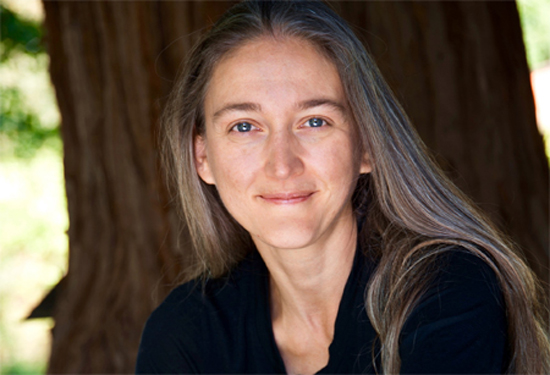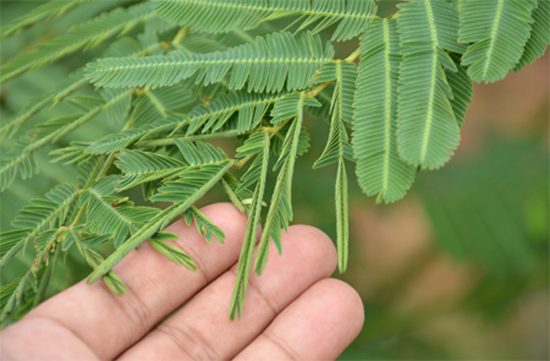There Is Someone In There – Professor Presents Remarkable Evidence of Plant Consciousness
Monica Gagliano, a thirty-seven-year-old animal ecologist at the University of Western Australia has conducted multiple experiments with plants that suggest they are a living, thinking, feeling and emotional beings.
Does consciousness reside in all things? Is a brain necessary to possess consciousness? Is consciousness dependent on a brain?

When it comes to the topic of consciousness, it’s something all living life forms possess. Including plants, and there is conclusive evidence for that. In fact, the question of whether consciousness is something that resides outside of the brain, or is a product of it, has long been the subject of scientific debate.
Parapsychological studies, which have gone through rigorous testing and according to statistics professor, Dr Jessica Utts at UC Irvine, have tighter controls than any other area of science, hint to the idea that consciousness is not solely located within us. This is evident by the fact that humans have the ability to “perceive” remote locations regardless of geographical distance (remote viewing) and it’s also evident by the fact that human thoughts and intentions can alter physical material reality at a distant location, at both the quantum level and at the human level.
For example, a paper published in Physics Essays explains how the double slit experiment has been used multiple times to explore the role of consciousness in shaping the nature of physical reality. The results clearly indicated that human intention, via meditators, was able to collapse the quantum wave function in that experiment, similar to the way observation or measurement does. The study received a 5 Sigma result, the same result that was given to CERN when they were awarded the Nobel Prize in 2013 for finding the Higgs particle, which turned out not to be Higgs after all.
We also point towards this document found in the CIA’s electronic reading room titled “Research Into Paranormal Ability To Break Through Spatial Barriers” as another example that goes beyond the quantum scale.
Biology is necessary for consciousness, but perhaps sometimes acts like a vessel for it without consciousness being dependent on biology. Near Death Experiences (NDE’S) are also a great example hinting to the idea that consciousness is not dependent on biology, and perhaps one of the best.
But what if plants are conscious? They don’t have a brain. Would that destroy the idea of the brain being a vessel of consciousness?
What comes to mind instantly here are the books written by hypnotherapist Delores Cannon. She has hypnotically regressed thousands of people with regards to supposed past lives, and found that many people have experienced past lives on our planet as well as on other planets as multiple different life forms, including trees, animals and plants. Now, how would one in a regressed state access these experiences? Where are they stored? These are questions that remain unanswered by science.
The regression sessions are legit in the fact that the patient is actually in a hypnotic state sharing these experiences, there is no question about that, but we have no way of knowing whether or not what they are sharing is real, but the consistency with regards to past life regression among thousands of subjects is interesting. Many children also share stories that can even be verified regarding their past lives.
When it comes to plants, many think that they are living, thinking, breathing, conscious beings. Grover Cleveland Backster Jr., was an interrogation specialist for the Central Intelligence Agency (CIA), who became well known for his experiments with plants using a lie-detector machine. Through his research, he believed that plants feel pain and have extrasensory perception (ESP). Author Michael Polan describes his experiments quite well in a piece he wrote for the New Yorker a few years ago regarding plant intelligence:
“Cleve hooked up a galvanometer to the leaf of a dracaena, a houseplant that he kept in his office. To his astonishment, Backster found that simply by imagining the dracaena being set on fire he could make it rouse the needle of the polygraph machine, registering a surge of electrical activity suggesting that the plant felt stress. ‘Could the plant have been reading his mind?’ the authors ask. Backster felt like running into the street and shouting to the world: ‘Plants can think!’

Backster and his collaborators went on to hook up polygraph machines to dozens of plants, including lettuces, onions, oranges, and bananas. He claimed that plants reacted to the thoughts (good or ill) of humans in close proximity and, in the case of humans familiar to them, over a great distance. In one experiment designed to test plant memory, Backster found that a plant that had witnessed the murder (by stomping) of another plant could pick out the killer from a lineup of six suspects, registering a surge of electrical activity when the murderer was brought before it. Backster’s plants also displayed a strong aversion to interspecies violence. Some had a stressful response when an egg was cracked in their presence, or when live shrimp were dropped into boiling water.”
His (Backster’s) work on this was published in the International Journal of Parapsychology.
Poland also describes the work of Monica Gagliano, a thirty-seven-year-old animal ecologist at the University of Western Australia. He describes an experiment she conducted with the plant Mimosa pudica, a fast moving plant that can be seen by the naked eye, kind of like the Venus Fly Trap.
Gagliano potted fifty-six of these plants, and had a system that dropped them from 15 centimetres every five seconds. When they are in danger, these plans curl up, and close their leaves. The plants did this after a few drops, but then realized that the drops weren’t really harmful so they remained open after that. It wasn’t just fatigue either, when the plants were shaken they closed up, and furthermore, the plants retained this knowledge because Gagliano tried again a month later and got the same response.
Gagliano said, imagining these events from the plants’ point of view. “You see, you want to be attuned to something new coming in. Then we went back to the drops, and they didn’t respond.” Gagliano reported that she retested her plants after a week and found that they continued to disregard the drop stimulus, indicating that they “remembered”.
Clearly, they learn, remember and apply that knowledge. These are all factors associated with consciousness and thinking. There has to be something or someone in there that’s responsible for that learning.
Fascinating isn’t it? Brains and neurons don’t seem to be a necessary requirement for factors associated with consciousness. What makes us assume that we need brains and neurons to be conscious? Why can’t we see any other type of possibility?
It reminds of the idea that planets have to be “Earth-like” to sustain or have life. How do we know? How do we know there aren’t beings that breathe some sort of gas we’ve never even discovered? How do we know there aren’t beings that don’t need to breath?
Humans and their assumptions/limited imaginations… We are conditioned to ‘see’ reality a certain way.
In the video below, in the second half of her interesting talk, Gagliano describes another experiment that suggests “someone is in there”. She conducted a similar experiment as Pavlov did with his dogs and makes some very interesting points.
Consciousness is not limited to humans and animals. It’s something that extends to plants, trees, insects, perhaps even the soil we walk on and much more that we take for granted. Our entire planet is awake and aware in ways we have yet to understand… and our entire universe as well.
yogaesoteric
November 28, 2019
Also available in:
 Français
Français
